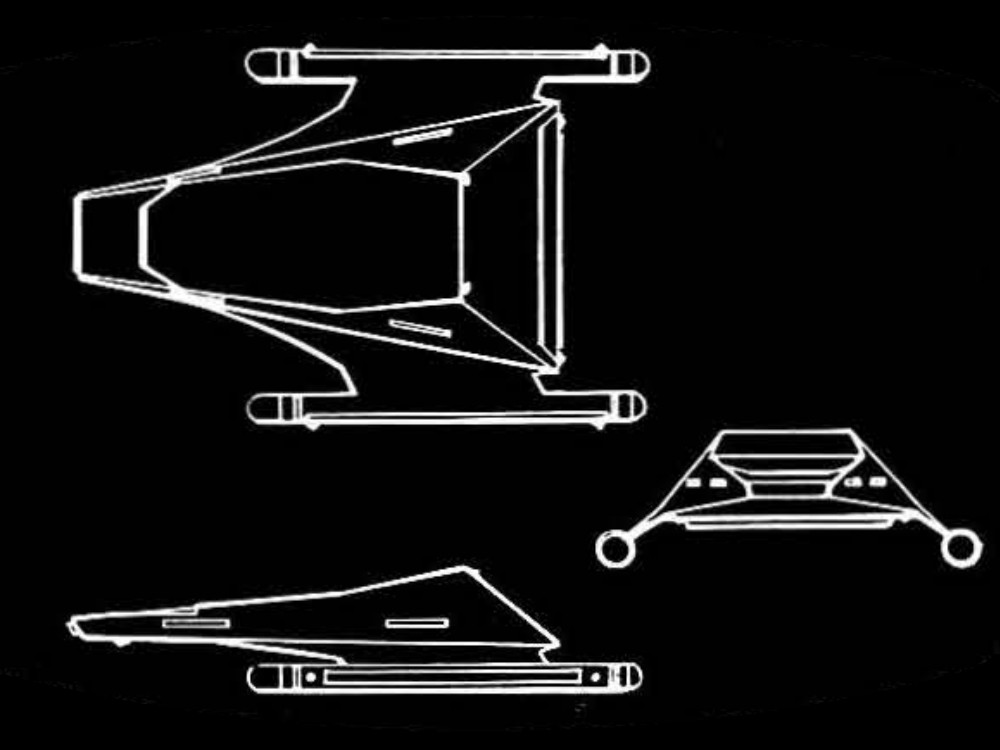Difference between revisions of "Mission class (FASA)"
| Line 1: | Line 1: | ||
{{DISPLAYTITLE:''Mission'' class (FASA)}} | {{DISPLAYTITLE:''Mission'' class (FASA)}} | ||
{{ImageInfoBox2|name=''Mission'' class|file=mission_class-fasa2001b.jpg|caption=''Mission'' class ({{FASA2001B}})}} | {{ImageInfoBox2|name=''Mission'' class|file=mission_class-fasa2001b.jpg|caption=''Mission'' class ({{FASA2001B}})}} | ||
| − | {{Commissioned| | + | {{Commissioned|c.{{link|FASA|2191}}}} |
| + | {{FirstData|FASA2001B|1983}} | ||
{{Ad|AmazonFASA2001}} | {{Ad|AmazonFASA2001}} | ||
|}</div> | |}</div> | ||
{{BannerFASA}} | {{BannerFASA}} | ||
{{InfoBox|float=left|boxwidth=30%|name=Specifications}} | {{InfoBox|float=left|boxwidth=30%|name=Specifications}} | ||
| − | {{TableRow|title=Date Entered Service|data= | + | {{TableRow|title=Date Entered Service|data={{bullet}}Mk II: {{RSD|2191|12||1/9112}}}} |
{{TableRow|title=Number Constructed|data=372<ref name="FASA2209"/>}} | {{TableRow|title=Number Constructed|data=372<ref name="FASA2209"/>}} | ||
{{TableRow|title=Length|data={{bullet}} Mk I: 31.5 [[meter|m]]<ref name="FASA2001B"/><br/>{{bullet}} Mk II: 32 [[meter|m]]<ref name="FASA2209"/>}} | {{TableRow|title=Length|data={{bullet}} Mk I: 31.5 [[meter|m]]<ref name="FASA2001B"/><br/>{{bullet}} Mk II: 32 [[meter|m]]<ref name="FASA2209"/>}} | ||
| Line 17: | Line 18: | ||
{{TableRow|title=Weapons|data=1 FH-6<ref name="FASA2209"/> [[Phaser]] (forward)<ref name="FASA2001B"/>}} | {{TableRow|title=Weapons|data=1 FH-6<ref name="FASA2209"/> [[Phaser]] (forward)<ref name="FASA2001B"/>}} | ||
|}</div> | |}</div> | ||
| − | Designed primarily as a courier ship, the ''Mission'' class was launched on | + | Designed primarily as a courier ship,<ref name="FASA2001B"/> the ''Mission'' class was launched in the late 22nd century, with the Mark II design entering service on {{RSD|2191|12||1/9112 (December 2191)|no}}.<ref name="FASA2209"/> Crew composition varied, based on the mission, and could be anywhere from 9 to 14 crew members. The ships had two 3-meter height decks, and a smaller, 2-meter height deck, for a total of 3 decks. The topmost deck contained the ship's engineering section, while the lower deck held the ship's bridge in the forward compartment, cargo space, and a single 3-person [[transporter (FASA)|transporter]]. The mid-deck had crew quarters and the ship's galley, which also doubled as a small lounge.<ref name="FASA2001B"/> The Mark II also included a second, dedicated cargo transporter.<ref name="FASA2209"/> |
| − | The class was given hull registries in three groups, based on mission type: [[NCC-13500]]-[[NCC-13999]] were reserved for courier ships, and were named for famous diplomats; [[NCC-16600]]-[[NCC-16699]] were reserved for research ships, and were named for scientists; and [[NCC-61000]]-[[NCC-61399]] were reserved for transports, and were named historical Naval officers.<ref name="FASA2001B"/> | + | The class was given hull registries in three groups, based on mission type: [[NCC-13500]]-[[NCC-13999]] (Mark I) were reserved for courier ships, and were named for famous diplomats; [[NCC-16600]]-[[NCC-16699]] (Mark I) were reserved for research ships, and were named for scientists; and [[NCC-61000]]-[[NCC-61399]]<ref name="FASA2001B"/> (Mark II)<ref name="FASA2209"/> were reserved for transports, and were named historical Naval officers.<ref name="FASA2001B"/> |
{{ClassMission}} | {{ClassMission}} | ||
{{References}} | {{References}} | ||
| Line 28: | Line 29: | ||
[[Category:Library]] | [[Category:Library]] | ||
[[Category:Ships & Vehicles]] | [[Category:Ships & Vehicles]] | ||
| + | [[Category:Federation]] | ||
[[Category:Ship Classes]] | [[Category:Ship Classes]] | ||
[[Category:Star Fleet Vessels]] | [[Category:Star Fleet Vessels]] | ||
Revision as of 08:52, 19 October 2023
| Date Entered Service | • Mk II: RSD1/9112 |
| Number Constructed | 372[1] |
| Length | • Mk I: 31.5 m[2] • Mk II: 32 m[1] |
| Width | • Mk I: 24.8 m[2] • Mk II: 25 m[1] |
| Height | • Mk I: 12.5 m[2] • Mk II: 13 m[1] |
| Decks | 3 |
| Mass | • Mk I: 6,000 mt[2] • Mk II: 9,000 mt[1] |
| Crew | 9-14 |
| Velocity | • Cruising: Warp 7.5 • Emergency: Warp 9 |
| Weapons | 1 FH-6[1] Phaser (forward)[2] |
Designed primarily as a courier ship,[2] the Mission class was launched in the late 22nd century, with the Mark II design entering service on Reference Stardate 1/9112 (December 2191).[1] Crew composition varied, based on the mission, and could be anywhere from 9 to 14 crew members. The ships had two 3-meter height decks, and a smaller, 2-meter height deck, for a total of 3 decks. The topmost deck contained the ship's engineering section, while the lower deck held the ship's bridge in the forward compartment, cargo space, and a single 3-person transporter. The mid-deck had crew quarters and the ship's galley, which also doubled as a small lounge.[2] The Mark II also included a second, dedicated cargo transporter.[1]
The class was given hull registries in three groups, based on mission type: NCC-13500-NCC-13999 (Mark I) were reserved for courier ships, and were named for famous diplomats; NCC-16600-NCC-16699 (Mark I) were reserved for research ships, and were named for scientists; and NCC-61000-NCC-61399[2] (Mark II)[1] were reserved for transports, and were named historical Naval officers.[2]
Mission class vessels
FASA Timeline
U.S.S. Coura NCC-13501 • U.S.S. Edward Pellew NCC-61204 / S.S. Two Brothers • S.S. Eridani Star • U.S.S. Galileo NCC-16600 • U.S.S. Huygens NCC-16601 • U.S.S. Jgonas NCC-61000 • U.S.S. John Paul Jones NCC-61001 • U.S.S. Kuiper NCC-16602 • U.S.S. Magnan NCC-13843 • U.S.S. Mission NCC-13500 • U.S.S. Peyton NCC-13502 • U.S.S. Walkad NCC-61002 • S.S. Werewolf F-006212
Notes and References
- ↑ 1.0 1.1 1.2 1.3 1.4 1.5 1.6 1.7 1.8 Keith, J. Andrew (Author). Margin of Profit. Star Trek: The Role Playing Game. Book 2209 . Graphics and layout by Dana Knutson, Norman Miller, and Jordan Weisman. Illustrations by Norman Miller. FASA Corporation. 1984.
- ↑ 2.0 2.1 2.2 2.3 2.4 2.5 2.6 2.7 2.8 McLimore, Guy W. Jr. et al (Authors). Adventure Book. Star Trek: The Role Playing Game. Book 2001B. Illustrations and Drawings by Mitch O'Connell and Jordan Weisman. FASA Corporation. 1983.

